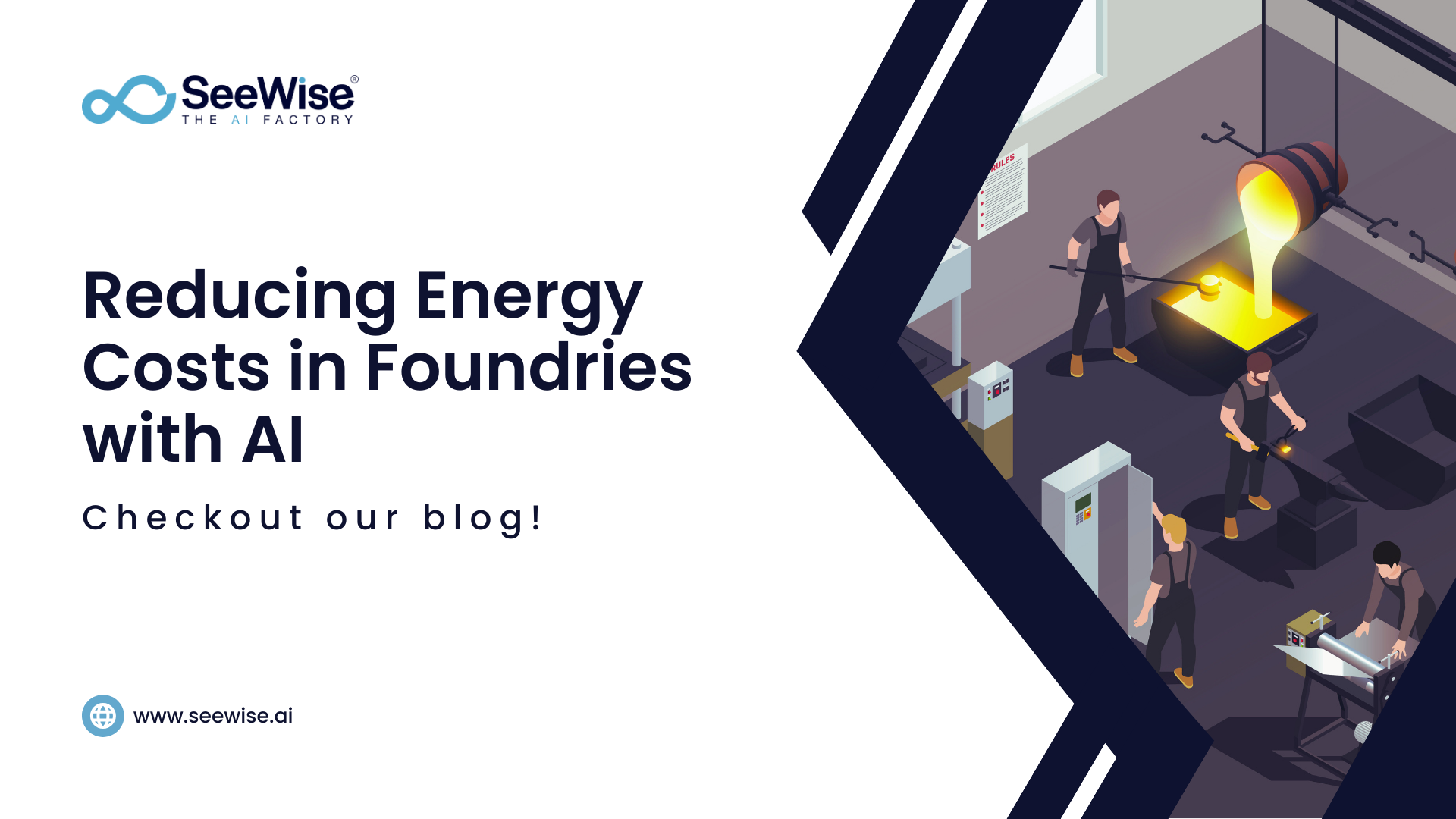Reducing Energy Costs in Foundries with AI

The Evolution of Foundries
From Industry 4.0 to Industry 5.0: The New Wave of Manufacturing
Industry 4.0, characterized by automation, IoT, and data exchange in manufacturing technologies, laid the foundation for a more interconnected and intelligent industrial ecosystem. However, the emergence of Industry 5.0 signifies a shift towards human-centric solutions that combine advanced technology with human creativity and expertise. This transition emphasizes collaborative robots (cobots), AI-driven decision-making, and sustainable practices.
Industry 5.0 focuses on creating symbiotic relationships between humans and machines, enabling real-time data analysis, predictive maintenance, and personalized manufacturing processes. It aims to enhance productivity, flexibility, and sustainability by leveraging AI, big data, and machine learning.
Importance of Energy Efficiency
In this new industrial era, energy efficiency is paramount. As manufacturing processes become more sophisticated and energy demands increase, reducing energy consumption is essential for cost savings and environmental sustainability. Foundries are among the most energy-intensive sectors in the manufacturing industry, consuming approximately 55% of their total production costs on energy alone. This staggering figure highlights the critical need for energy efficiency improvements in foundry operations. Industry 5.0 technologies, particularly AI, play a crucial role in achieving these energy efficiency goals.
AI's Role in Energy Management
Harnessing AI for Smarter Energy Use
Artificial Intelligence (AI) refers to the simulation of human intelligence in machines programmed to think, learn, and make decisions. In energy management, AI algorithms analyze vast amounts of data to identify patterns, predict energy needs, and optimize energy usage.
Optimizing Energy Consumption
AI can optimize energy consumption in foundries by monitoring equipment performance, predicting maintenance needs, and adjusting energy usage in real time. For instance, AI algorithms can detect inefficiencies in heating and cooling systems, leading to timely interventions that reduce energy waste.
Example
A leading foundry implemented an AI-driven energy management system that continuously monitored and analyzed energy consumption patterns. By identifying inefficiencies and optimizing energy use, the foundry reduced its energy costs by 20%, demonstrating the significant impact of AI on energy management.
The Power of AI Smart Cameras
AI Smart Cameras: The Eyes of Modern Foundries
Introducing AI Smart Cameras
AI Smart Cameras are advanced devices equipped with machine vision technology that can capture, process, and analyze visual data in real time. These cameras are designed to monitor production processes, detect anomalies, and ensure optimal energy use.
Monitoring and Analyzing Energy Use
AI Smart Cameras provide real-time insights into energy consumption by continuously monitoring machinery and production lines. They can detect energy wastage, such as machinery operating unnecessarily or inefficiently, and prompt corrective actions.
Benefits of AI Smart Cameras
The primary benefits of AI Smart Cameras include identifying energy wastage, ensuring efficient resource use, and enhancing overall operational efficiency. By providing accurate and actionable insights, these cameras enable foundries to make informed decisions that lead to significant energy savings.
Large Vision Models: The Brain Behind Energy Optimization
Large Vision Models are sophisticated AI systems that process and analyze extensive visual data to extract meaningful patterns and insights. These models leverage deep learning algorithms to interpret complex data sets, enabling precise energy optimization.
Data Analysis
Large Vision Models can analyze vast amounts of visual data from production processes to identify inefficiencies and opportunities for energy savings. By recognizing patterns and predicting energy needs, these models enable proactive energy management.
For instance
In a foundry setting, a Large Vision Model analyzed data from AI Smart Cameras to optimize furnace operations. By adjusting heating cycles and identifying energy-saving opportunities, the foundry achieved a 15% reduction in energy consumption, showcasing the potential of Large Vision Models in energy optimization."
Real-World Impact: Case Studies of AI in Foundries
- Case Study 1: A European foundry implemented AI-driven energy management systems, resulting in a 25% reduction in energy costs and a 10% increase in overall productivity.
- Case Study 2:A U.S.-based foundry utilized AI Smart Cameras to monitor and optimize energy use, achieving a 20% decrease in energy consumption within six months.
Highlighting the quantitative impact of AI implementation, these case studies demonstrate significant energy savings and operational improvements, reinforcing the value of AI in foundries.
Benefits Beyond Energy Savings
Beyond Cost Reduction: The Comprehensive Benefits of AI Integration
Integrating AI in foundries offers numerous benefits beyond energy savings, including improved productivity, reduced downtime, enhanced quality control, and predictive maintenance. These advantages contribute to overall operational efficiency and competitiveness.
Explore AI solutions for your foundry today to realize energy efficiency and align with the future of manufacturing.

